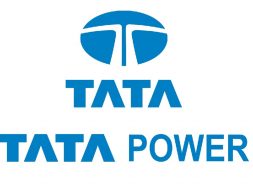
Aramco records 14% drop in Q1 net income in first-quarter – EQ
In Short : Aramco has reported a 14% decline in net income for the first quarter. This financial outcome reflects the impact of various factors such as fluctuating oil prices, market dynamics, and global economic conditions on the company’s performance during the quarter.
In Detail : Saudi Aramco, the energy giant, revealed a 14 percent decrease in its first-quarter net income to $27.3 billion, compared to $31.9 billion recorded in the same period last year.
Upstream
Aramco, announcing its financial result, said it achieved hydrocarbon production of 12.4 mmboed in the first quarter. In January 2024, the Government directed Aramco to maintain MSC at 12.0 mmbpd. This directive will have no impact on announced, nearterm projects including the Dammam development and the Marjan, Berri, and Zuluf crude oil increments. Production from these projects will be used to maintain MSC at 12.0 mmbpd.
Downstream
Aramco enhanced its global Downstream business during the quarter by expanding its presence in key high-growth geographies, positioning itself to meet anticipated demand for petrochemical products, and growing its global brand presence. The company achieved 99.7 percent supply reliability in the first quarter of the year. The crude oil utilized by Aramco’s downstream operations accounted for 51 percent of the Aramco’s crude oil production.
Renewables
One of its five decarbonization levers is renewables, and Aramco aims to increase its use of renewable energy sources and invest in up to 12 GW of solar PV and wind projects by 2030. In January 2024, the Sudair Solar PV Plant, one of the largest solar plants in the region with a capacity of 1.5 GW, reached full capacity operation. The project is jointly owned by Aramco (30 percent), PIF (35 percent), and ACWA Power Company (35 percent), and reflects Aramco’s efforts to address climate change and the energy transition.
The decline in net profit comes amidst ongoing efforts by OPEC+ to manage oil output, responding to increased production from non-member states like the United States. This move, initiated since late 2022, aimed to stabilize the market against the backdrop of fluctuating demand and concerns over global economic conditions, including high interest rates in major economies, Reuters news report said.
Brent crude prices have been averaging approximately $83.50 in 2024, according to reports, while the International Monetary Fund (IMF) forecasts indicate that Saudi Arabia requires oil prices to reach $96.2 to balance its budget for the year. With an anticipated budget deficit of 79 billion riyals ($21.07 billion) looming, the Kingdom may need to defer certain segments of its extensive development projects.
Aramco said capital expenditures for the first quarter of 2024 were SAR 33,114 ($8,830), an increase of 30.7 percent compared to SAR 25,332 ($6,755) for the same period in 2023. This increase in Capex of Aramco reflects progress associated with crude oil increments to maintain MSC at 12.0 mmbpd and increased development activity to support further expansion of the Company’s gas business
In response to the economic challenges, the Saudi government, which holds an 82.2 percent stake in Aramco, directed the company in January to abandon its expansion plans aimed at increasing production capacity to 13 million barrels per day (mbpd), reverting instead to the previous target of 12 mbpd.
As a consequence of this directive, Aramco has halted progress on two major projects, Safaniyah and Manifa, while three others remain in progress. Despite these adjustments, Aramco announced on Tuesday that it anticipates the Marjan and Berri projects to commence production in 2025, adding 300,000 barrels per day and 250,000 barrels per day, respectively. Additionally, the Zuluf project is on schedule to contribute an additional 600,000 barrels per day by 2026.
The company remains committed to optimizing its maximum production capacity to align with the 12 million barrels per day target, despite ongoing project developments.
In light of the evolving economic landscape, Finance Minister Mohammed Al Jadaan recently acknowledged the need for adjustments to the Vision 2030 plan, Saudi Arabia’s ambitious initiative to diversify its economy. Some projects may be scaled back or extended, while others could be expedited to adapt to the current challenging environment.
To address financial requirements, the Kingdom is exploring avenues to raise up to 138 billion riyals ($36.80 billion) in financing for the year 2024, significantly exceeding the initial estimate of $23 billion at the beginning of the year.













